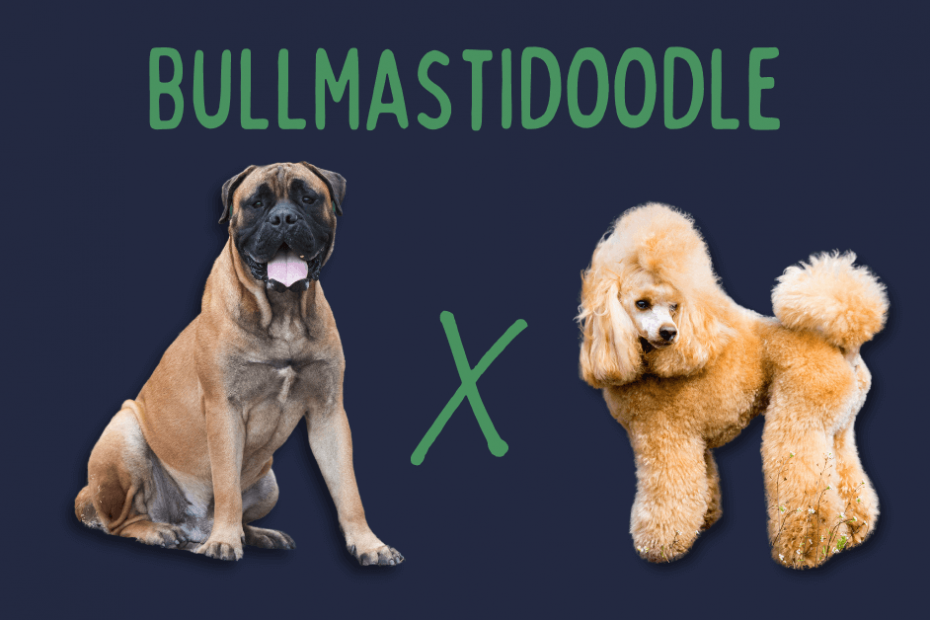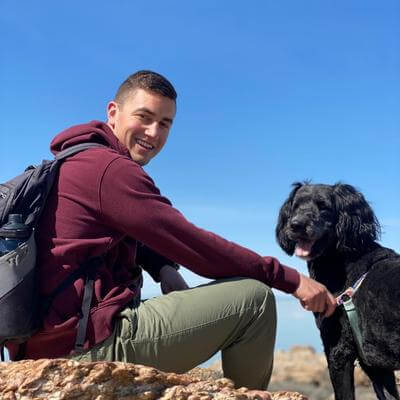What do you get when you cross a Bullmastiff with a Poodle? You get the Bullmastidoodle!
A Bullmastidoodle is one of the largest Doodle breeds. Despite their massive size, they inherit a gentle and playful temperament, making them excellent family dogs.
Is the Bullmastiff-Poodle mix the right breed for you? Find out below!
What is a Bullmastidoodle?
A Bullmastidoodle is a mix between a Bullmastiff and a standard Poodle.
A Bullmastiff is a large breed dog first bred to guard gamekeepers’ properties from human poachers. They typically weigh between 100 to 130 pounds and measure 24 to 27 inches tall at the shoulder.
Poodles are a highly-recognizable dog breed. They’re famous for their unique haircuts, intelligence, curly coat, and elegance.
Poodles are smaller than Bullmastiffs, weighing about 40 to 70 pounds depending on whether they’re male or female. They typically stand at or above 15 inches tall.
History of the Parent Breeds
Understanding the Bullmastidoodle means diving into the history of the parent breeds: the Bullmastiff and the Standard Poodle.
Learn more about the Bullmastidoodle’s parent breeds in the following sections.
Bullmastiff
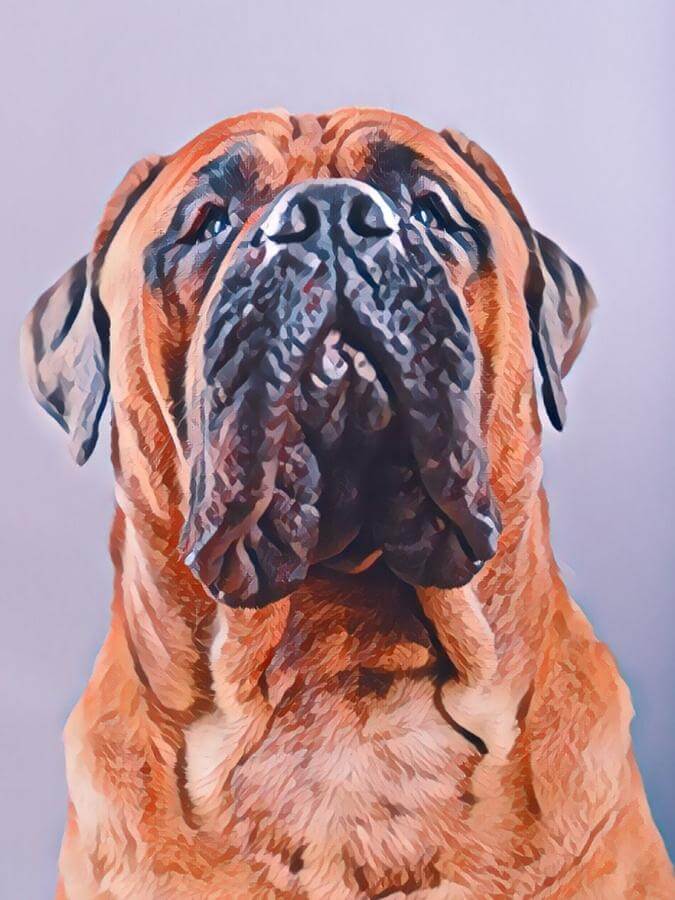
The most defining characteristic of a Bullmastiff is its large size. It’s a muscular breed that likes to work but is generally mellow inside the home. The Bullmastiff has an intriguing history that dates back to the 1860s.
The Bullmastiff is a combination of the English Bulldog and the English Mastiff. It was first bred in the 1860s as a guard dog to protect the properties of gamekeepers.
At the time, gamekeepers struggled to fight off human poachers. The Bull Mastiffs’ large muscles and intimidating size made them perfect for the job.
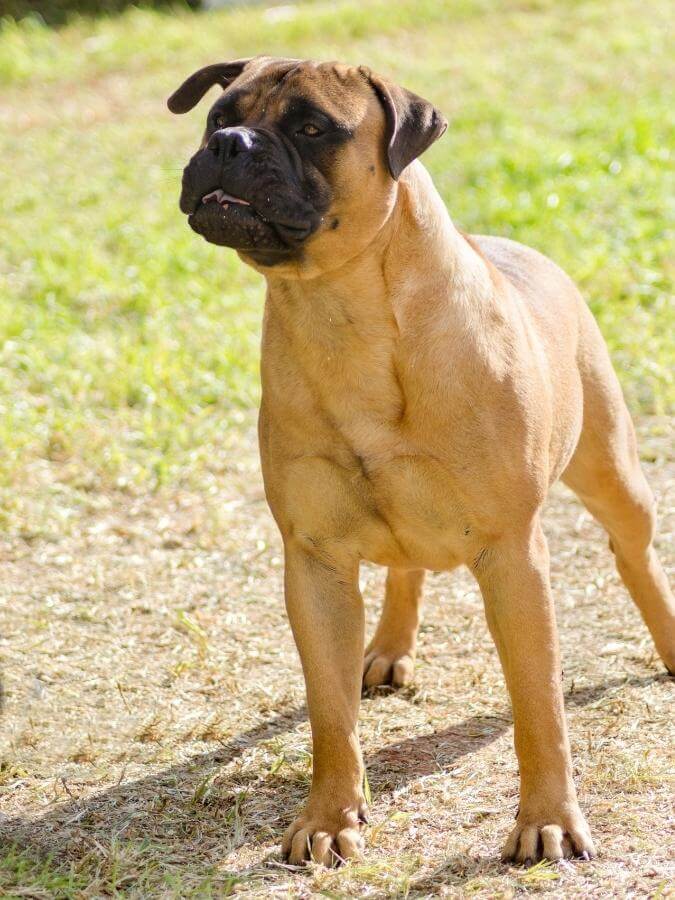
They responded well to commands and were strong and intelligent enough to hold a poacher down without mauling them. They were indeed large and muscular enough to scare a poacher half to death. This is where they acquired their nickname, the “gamekeeper’s night dog.”
In 1924, England’s Kennel Club became the first organization to recognize the Bullmastiff as a breed. The American Kennel Club did the same in 1933.
Poodle
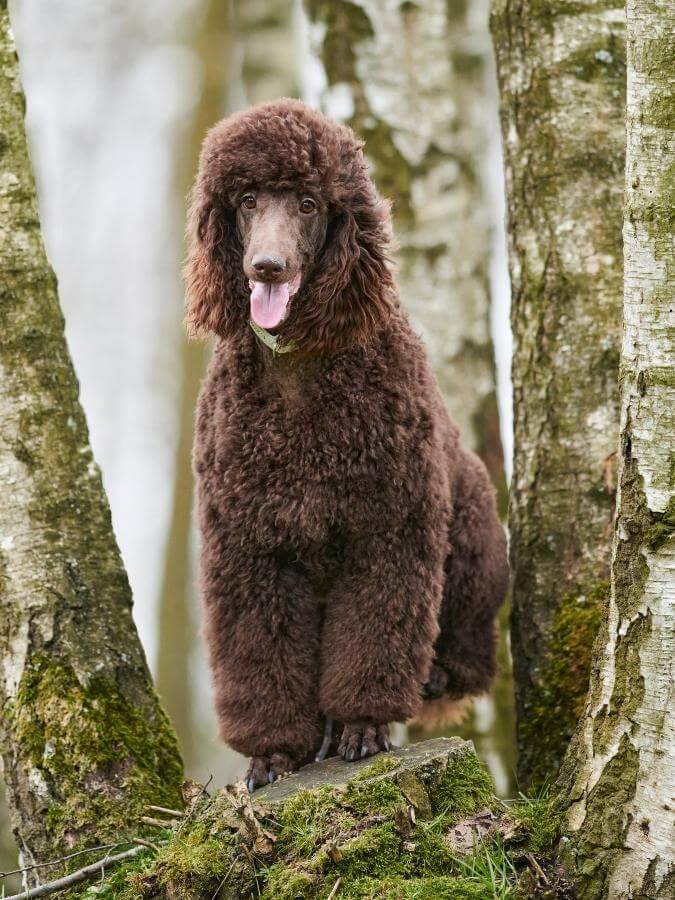
The standard Poodle is a highly recognizable breed. However, many people don’t know the Poodle’s rich history and how the breed acquired its characteristically interesting haircuts.
Poodles are excellent swimmers and were bred for waterfowl hunting. Their unique haircuts helped insulate them while swimming in ice-cold water.
They are one of the oldest breeds globally and are believed to have been a crossbreed of water dogs from European countries, including Portugal, Hungary, Russia, and Spain, and Asian herding dogs.
Many people associated Poodles with France. However, these wonderful dogs originated in Germany. The name “Poodle” comes from “pudel,” a German word that means “to splash in” in English. Many Europeans, especially the French, took a liking to Poodles and the breed began to spread across the continent.
In France, the Poodle was a great attraction as circus performers. The breed was selectively bred down in size to produce the Miniature Poodle.

Outside circus and hunting activities, the Poodle became extremely popular as a much-loved companion. Poodles are loyal, intelligent, and good-natured.
Appearance
Bullmastiffs and Poodles are both beautiful dogs. It is safe to assume that the Bullmastidoodle would follow suit!
The Bullmastiff is a large-sized breed while the standard Poodle is medium to large.
Bullmastidoodles can range in size from medium if they take after their Poodle side or impressively large if they’re more mastiff. Most Bullmastidoodles are much larger than more common Doodle breeds.
The way a Mastidoodle looks depends on which genes it inherits from the parent dogs. Some appear more Poodle-like with long limbs and slender bodies, while others have the muscles and size of their mastiff side.
Coat Type
The coat type a Bullmastidoodle possesses also depends on the genes it inherits. However, the breed generally has a wavy, long, and dense coat that requires quite a bit of maintenance.
A Mastidoodle with curlier, Poodle-like hair will require daily brushing, while one with a Mastiff-like coat needs brushing a few times a week. Either way, it’s time to purchase a durable dog brush!
A breeder cannot claim a Bullmastidoodle is entirely hypoallergenic because only one of the parents is. Mastiffs are heavy shedders, so Bullmastidoodles tend to shed even with their Poodle genes.
Grooming
A Bullmastidoodle living in a cool climate will likely need grooming every one to three months. Those in warmer temperatures should go to the groomer every four to six weeks so they don’t overheat.
Consistent grooming will keep your dog more comfortable and your floors free of hair!
Coat Colors
Bullmastidoodles can come in a variety of coat colors. Mastiffs are a variety of shades of red or brindle, while Poodles can be black, white, silver, blue, cream, red, apricot, and any shade of brown.
A Bullmastidoodle may also have brindle fur, which appears as inconsistent stripes of dark and light fur. It’s a unique color combination that many pet owners desire.
A Bullmastidoodle can be any of the colors listed below or a mixture of several colors.
- apricot
- black
- blue
- brown
- cafe au lait
- cream
- fawn
- fawn brindle
- gray
- red
- red brindle
- red fawn
- red fawn brindle
- silver
- silver beige
- white
Size
Bullmastidoodles are some of the largest Doodle breeds. They tend to be medium to large-sized dogs because the Bullmastiff is such a large and powerful breed.
Height
A male Bullmastidoodle is likely to be about 21 inches tall, and a female is roughly 19 to 20 inches tall.
Weight
A male Bullmastidoodle would average between 85 and 100 pounds, and a female would range from 70 to 85 pounds.
Traits & Characteristics

Personality of the Bullmastiff-Poodle Mix
A Bullmastidoodle can be intelligent, loyal, and eager to please. It would make an excellent protector in the home and an unrivaled companion. However, it will likely require socialization and training at a young age before it gets too large and difficult to control.
A Bullmastidoodle will likely be an affectionate addition to your home, but it should be well-socialized with children and other dogs before entering. Fortunately, Bullmastidoodles are typically intelligent and respond well to training.
Training
It is critical to begin training a Bullmastidoodle while they’re young. They can be much more challenging to train once they’re large, heavy, and strong.
The Bullmastidoodle is an intelligent dog, so it can learn quickly but may also be stubborn. Make training sessions frequent but short so the puppy doesn’t lose interest.
Always remember to praise your Bullmastidoodle when they do well, as they’re a breed that is eager to please. That means keeping their favorite toys or treats stocked!
Don’t forget to socialize your pup with humans and other dogs as often as possible. Doggy daycare and the dog park are excellent options for socializing Bullmastidoodles.
Common Health Issues
Nobody wants to think about future health issues their dog might have, but it’s essential to understand them when considering a large dog like the Bullmastidoodle.
A Bullmastidoodle may develop joint dysplasia, cancer, a torn ACL, and other common problems both parent breeds experience.
Bloat is a swelling of the abdomen that can be life-threatening for Bullmastidoodles. Owners need to understand the signs of bloat, so they can take action immediately upon seeing them.
Lifespan
The average lifespan for a Bullmastidoodle would be between 8 and 14 years.
Final Thoughts
So is a Bullmastidoodle going to be the next big addition to your family? Don’t be surprised when they want to climb onto your lap at movie time or lay on top of one of your guests!
With regular training and plenty of love, you’re guaranteed to be impressed by the Bullmastidoodle’s intelligence, loving nature, and ability to fit right into your family.

